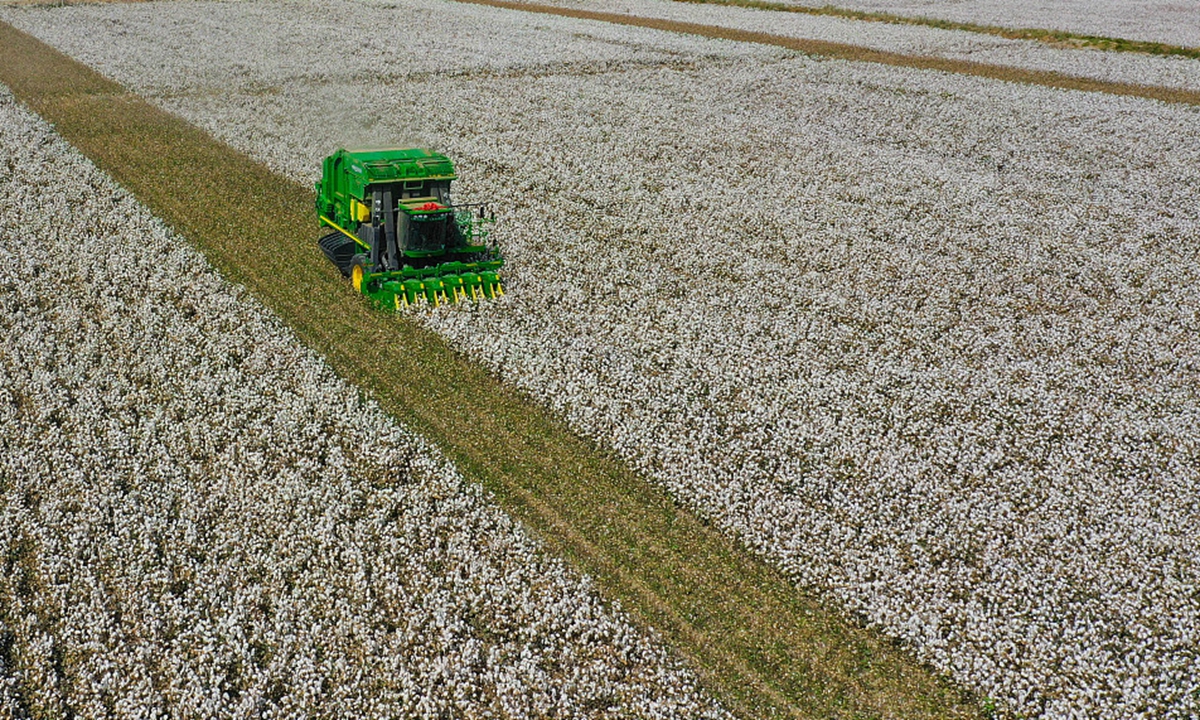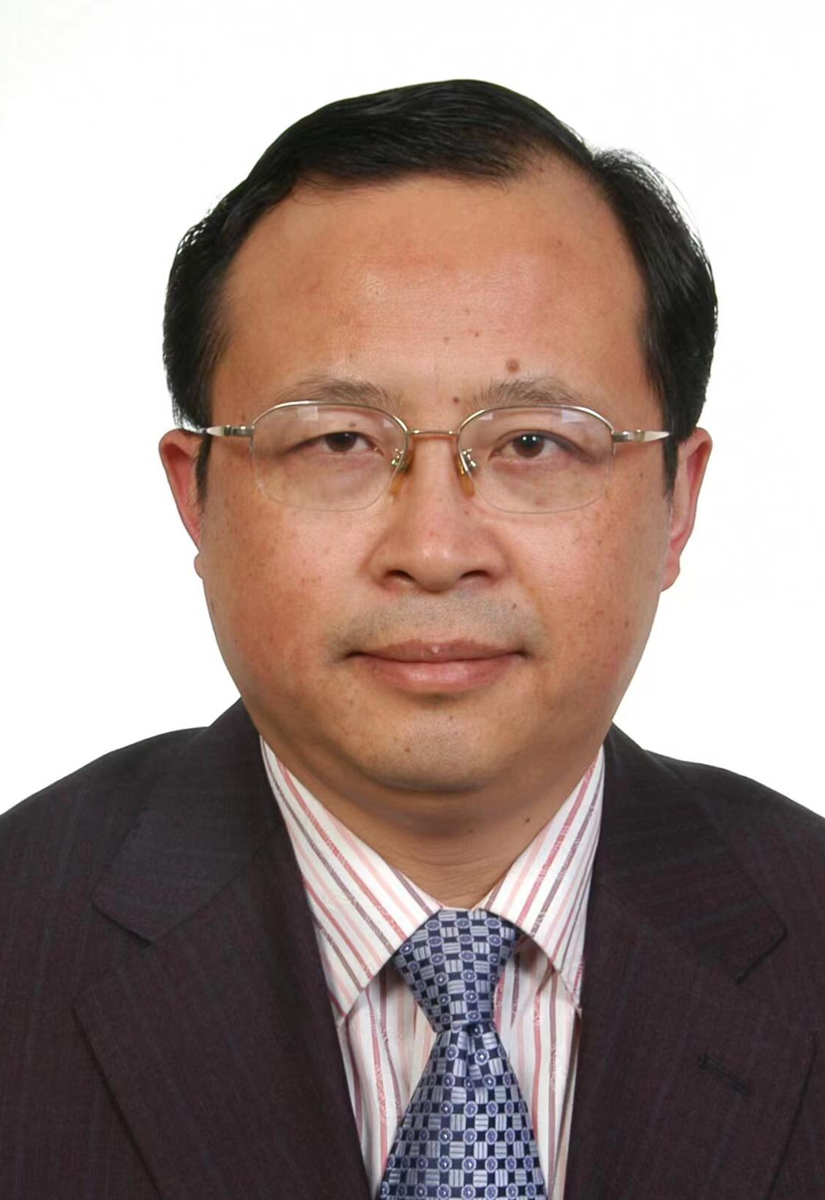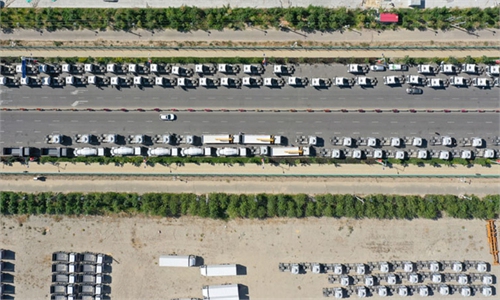OPINION / VOICES
Xinjiang cotton industry maintains good momentum despite US crackdown: political advisor

Xinjiang cotton Photo: VCG
The US and its Western allies' relentless crackdown against Xinjiang's cotton industry since 2020 has failed, as the industry has been maintaining sound development momentum, and is seeing rising competitiveness not only in the Chinese market but also internationally, Liang Yong, a member of the National Committee of the Chinese People's Political Consultative Conference (CPPCC) and a member of the China Association for Promoting Democracy, one of China's eight noncommunist political parties, told the Global Times. Liang is also the director of Xinjiang cotton industry development leadership office.
"Despite a drop in China's textile and clothes exports to the US that are made with Xinjiang cotton, China is still the world's largest cotton consumer as well as textile and clothes exporter. China is also the world's largest cotton importer," Liang said.
According to Liang, the competitiveness of Xinjiang's cotton industry has been rising year by year, fueled by tech innovation and the promotion of large-scale cultivation. In 2023, the overall mechanization rate for cotton harvesting hit 89 percent in Xinjiang, compared with 21 percent in 2014.
Also, the Xinjiang cotton per unit yield averages 143.85 kilograms per mu (0.067 hectares), which is twice that of the US and almost the same level as in Australia. In 2023, the output of Xinjiang cotton was 5.11 million tons, representing 91 percent of the national yield, and one-fifth of global output, the national political advisor said.
Liang said that in the next step, the office will work on setting up a homegrown cotton quality tracing system and certification system as well as building a number of homegrown brands. Meanwhile, he said that the Xinjiang cotton industry is actively expanding into overseas markets, in particular markets in the Belt and Road Initiative (BRI) partner countries, to promote the stability of the global textile supply chain.
Liang has also submitted a proposal for this year's two sessions titled "building a joint cotton market with Shanghai Cooperation Organisation (SCO) members." According to the proposal, which he shared with the Global Times, the Xinjiang region, along with neighboring India and Pakistan as well as five Central Asian countries, are the main cotton producers in the world and they together represent nearly 60 percent of global cotton output.
He suggested a number of measures that could lay a foundation for building the joint market, including studying import and export tariff policies concerning cotton and textile products, as well as setting up a mutual recognition mechanism among SCO members for products such as cotton and cotton yarn.

Liang Yong, director of Xinjiang cotton industry development leadership office Photo: Courtesy of Liang Yong
"Setting up a joint cotton market with other SCO members is an effective way to counter the US-led crackdown and increase market demand. It will also elevate the global influence of China's cotton industry, while deepening economic and trade ties," Liang explained.
"Xinjiang has a geographic advantage as it borders eight countries including Kazakhstan, Russia, India and Pakistan. The region is also home to about 20 border ports, including 17 land border ports and three aviation ports. The majority of China-Europe freight trains also pass through Xinjiang," Liang added.
In November, the Xinjiang Pilot Free Trade Zone (FTZ), the first in China's northwestern border regions, officially started operation.
Liang believes that this geographic edge, plus the relatively cheap cost of production and policy support, will create conditions for Xinjiang to become the center of China's western textile industry cluster, which mainly exports to Central Asia, West Asia, South Asia and Europe. "Such a scene is foreseeable in the next five years," Liang said.
In 2023, the value of textile products exported from Xinjiang rose 34.6 percent to 107.59 billion yuan, according to data provided by Liang.
Xinjiang is also speeding up the building of a Silk Road Economic Belt core area. It is expected that under the BRI, Xinjiang will further leverage its advantageous industries and accelerate regional cooperation to make itself a bridgehead in China's westward opening-up process, Liang said.




